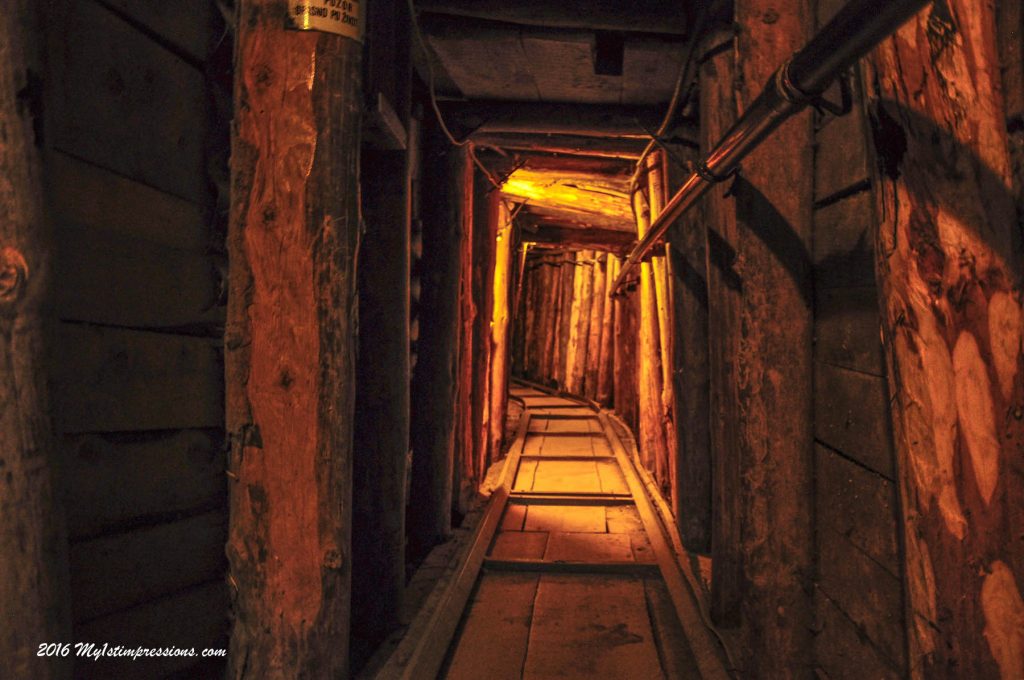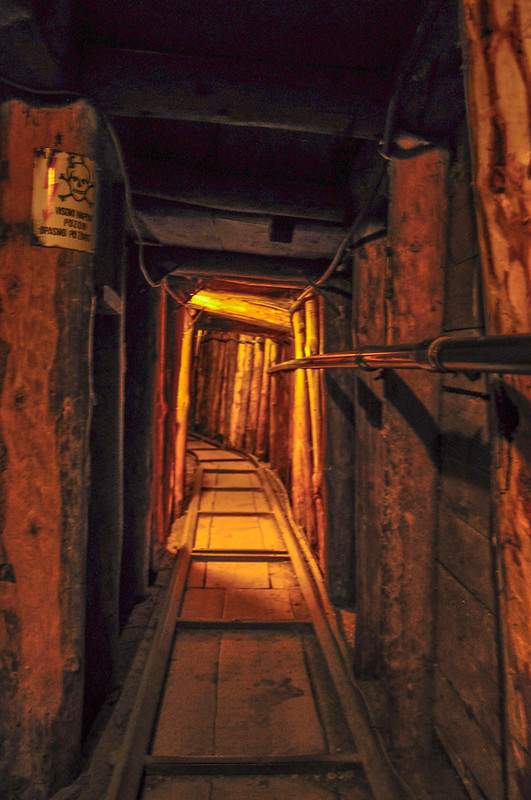Sarajevo has definitely been one of the main cities that has made the history of the 20th century.
It literally opened the history of the century, with the assassination of the heir to the Austro-Hungarian throne, Archduke Franz Ferdinand, and his wife Sophie, on a public visit to Sarajevo by a chance shot given to a Serb assassin, and it closes the century with one of the most cruel civil wars we had in Europe in the past 100 years.
Sarajevo is a place full of history, which you can feel it in almost every corner of the town and which you can still observing it in the eyes and the wrinkles of its people who survived the war.

Numbers in pink show the Serbian artillery during the Siege of Sarajevo against the Bosnian one, in blue.
There is one place in Sarajevo where you can touch with your hands the brutality of the war and the courage of those who survived, and this is The Tunnel, often called by the international community Tunnel of Life or Tunnel of Hope, but called by Bosnians simply The Tunnel, the place that every person living in Sarajevo knows and will be happy to give you information about, a 800 mt underground pass built between March and June 1993 during the Siege of Sarajevo, when the town was surrounded, isolated and bombed for 1425 days, more than 3 years, by the Serbian troops first and the Croatians, after. During the Siege, bombs rained down on Sarajevo, Serbs hid in the hills while their tanks blocked every road leading out of the city. The people of Sarajevo were trapped and starving, living in their basements and rationing their last cans of food. 11541 people were killed during the Siege and 1601 of them were children.

The list of the 11.541 people killed in the 1425 days of Siege inSarajevo. Among those, 1601 were children.
The city would have fallen if not for one man—Bajro Kolar.
In early 1993, Kolar, his wife, his son, and about 200 soldiers began burrowing the soil at the back of his house, somewhere outside of the Serb Line digging every inch by hand. It took them only 4 months, all of them working 8 hour shift. The tunnel was less than 5 feet high, so miners had to crouch low with their picks and shovels. They reinforced the walls with wood like an old-fashioned coal mine, and even placed a railway track on the floor.
They call the Sarajevo Tunnel The “Trojan Horse of the Bosnian War”. It has been estimated that more than 1 million trips were taken through the shaft, allowing the import food for those living in town and of munition for those living out of town, helping the Bosnian army defend itself against the well-armed Serbs.
The condition of the Tunnel were tough, the passage was so narrow, dark, dirty, cold, and crowded that a one-way trip could take as long as two hours.
Today you can enter a short part of the Tunnel, and have an idea of how it must have been under the bombs and on those cold days of winter. The Museum outside of the tunnel is interesting as well with a video about the bombing of Sarajevo and the construction of the pass and a museum with a reconstruction of the tunnel and items of that period.
So much life has passed through that tunnel, so many hopes and fears. Maybe because I remember watching daily news about that war on tv when I was a kid, maybe because in Sarajevo scars of the war are everywhere, but this place today gave me goosebumps. In that tunnel the history of the past century ended, closing a century of wars and genocides, hate and mass murders, of some of the lowest and most horrible atrocities that humanity has ever been able to commit.

In the museum you can see a reconstruction of the tunnel and its use by civilians and military people
With the liberation of Sarajevo and the end of the war, the tunnel was closed with the hope that there won’t be any need of it anymore in the future. That’s the legacy left to the Balkan people by those who lost everything under those bombs.
Don’t miss that tunnel, when in town.
TUNNEL ENTRANCE FEE: 10 KM, about 5 Euros.
HOW TO GET THERE:
Cheapest way: Take tram nr. 3, route “Bascarsija-Ilidža”, behind the cathedral and get off at the last stop “Ilidža”. It will take about 45 minutes ride to get there. From Ilidza you can take a taxi (about 5 euros) or the Bus nr. 32 rpute Ilidža-Donji Kotorac, get off at the third stop and follow the sign to the tunnel.
- Price of the tram: 1.80 KM, about 90 cents
- Price of the bus: 1,60 KM, about 80 cents.
Alternative way: Take a taxi from the city center. It cost about 20 KM, 10 euros.
CLICK BELOW TO SEE THE FULL ALBUM:
-
 Guadix, a Spanish Hobbiton
An hour away from Granada, hidden between prehistoric karst mountains,( read more...)
Guadix, a Spanish Hobbiton
An hour away from Granada, hidden between prehistoric karst mountains,( read more...) -
 Alicante, Spain with a Nordic vibe
Alicante represents the door to the Southern vibes of Spain.( read more...)
Alicante, Spain with a Nordic vibe
Alicante represents the door to the Southern vibes of Spain.( read more...) -
 Tarragona, pure magic!
Arriving in Tarragona on the very first night of its( read more...)
Tarragona, pure magic!
Arriving in Tarragona on the very first night of its( read more...) -
 In the sacred woods of La Sagrada Familia
It is truly impossible to describe the feeling I had( read more...)
In the sacred woods of La Sagrada Familia
It is truly impossible to describe the feeling I had( read more...) -
 Venice, just a perfect day
Take a sunny day after the Christmas holidays when tourists( read more...)
Venice, just a perfect day
Take a sunny day after the Christmas holidays when tourists( read more...) -
 Northern Lights:The dance of the Green Spirits
For many years one of the most funny stories about( read more...)
Northern Lights:The dance of the Green Spirits
For many years one of the most funny stories about( read more...)








